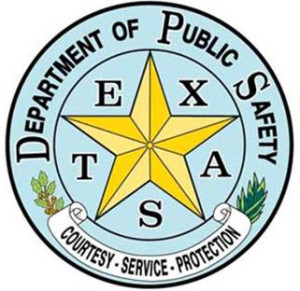- South Texas Students Meet Accordion Music Icons Los Tigres Del Norte In Edinburg Thanks To Khs America/Hohner Alianza Académica Initiative
- Fragile Planet Offers a Nighttime Wildlife Experience
- Falcons Soccer Off & Running
- Cameron County Receives Funds to Improve Two Parks
- Falcons Complete First Half of 32-6A
- School District to Help out Victims of California Wildfires
- Sand Castle Days Continued Despite Unexpected Weather
- Ready for District
- Discussion of Garbage Dumpster Rates, Agreements Between State & City on Highway Regulations, and More
- 31st Annual Shrimp Cook-Off is Right Around the Corner
State Intelligence Report Highlights Threats to Texas
- Updated: April 1, 2013
Identifies Mexican cartels as most significant organized crime threat
AUSTIN – The Department of Public Safety (DPS) has released the 2013 Texas Public Safety Threat Overview, a state intelligence estimate that offers a review of current public safety threats to Texas. DPS Director Steven McCraw highlighted the report’s key findings this week at the 2013 Texas Emergency Management Conference in San Antonio.
“DPS relies on an arsenal of tools to combat the myriad public safety and homeland security threats facing our state, ranging from natural disasters to organized crime and cyber attacks,” said DPS Director McCraw. “It is paramount that DPS and our law enforcement partners be prepared when the unthinkable happens, and this assessment specifically identifies the most significant threats that we must contend with.”
The report draws on the information and perspectives of multiple law enforcement and homeland security agencies, whose contributions were invaluable to developing this assessment.
The report also details the state’s systematic approach to detecting, assessing and prioritizing public safety threats within seven separate categories: crime, terrorism, motor vehicle crashes, natural disasters, public health threats, industrial accidents and cyber threats.
The report identifies Mexican drug cartels as posing the most significant organized crime threat to the state. Six of the eight cartels currently have command and control networks operating in the state, moving drugs and people into the United States, and transporting cash, weapons and stolen vehicles back to Mexico.
“The impact of cartel crime is painfully obvious when we look to our neighbors in Mexico, with some 60,000 deaths since 2006 and continued cases of brutal torture,” said Director McCraw. “It is a top DPS priority to severely obstruct the range and power of Mexican drug organizations to affect the public safety of Texas citizens.”
Additional significant findings include:
Statewide prison gangs pose the second most significant organized crime threat in Texas. Many gangs now work directly with the Mexican cartels, gaining substantial profits from drug and human trafficking. Prison gangs operate within and outside the prison system, and are responsible for a disproportionate amount of violent crime.
Criminal aliens, who may not be affiliated with cartels and gangs, also pose a threat. From October 2008 to December 2012, Texas identified a total of 141,982 unique criminal alien defendants booked into Texas county jails. These individuals are responsible for at least 447,844 individual criminal charges, including 2,032 homicides and 5,048 sexual assaults.
Criminal organizations and individuals are engaging in the exploitation and trafficking of children for financial gain. These heinous crimes subject children to violence, extortion, forced labor, sexual assault and prostitution. Some children are more vulnerable to exploitation, including unaccompanied alien children, as well as those who are lost, missing or abducted. There are currently 76,272 sex offenders registered in Texas, and at least 60,871 of these offenders had a child victim.
Most recently, terrorism has become disaggregated with individual and would-be terrorists acting alone engaged in jihad. Nidal Hasan is the most prominent example of this type of terrorist, killing 13 U.S. servicemen at Fort Hood on November 5, 2009. Over the past five years in Texas, there have been four other Islamic extremist plots and two anti-government terrorist plots. In addition, there have been documented incidents of foreign nationals with links to terrorism entering the United States from Mexico using existing human trafficking and human smuggling networks operated by the cartels, though not in an active conspiracy with the cartels.
Motor vehicle crashes killed 3,353 people in Texas in 2012. Of all the contributing factors to motor vehicle crashes, driving under the influence of alcohol stands out for the number of deaths that it causes.
Natural disasters such as floods, hurricanes and tropical storms, tornadoes, drought, and wildfires represent a continued and highly unpredictable public safety threat. These disasters result in deaths, loss of infrastructure, and billions of dollars in personal property damage and economic losses.
Major industrial accidents are a potential threat to public safety, considering the large industrial base in Texas, which includes the petrochemical industry, 212,000 miles of regulated gas and oil pipeline, and the tons of hazardous materials that are shipped by rail across 10,384 miles of freight rail track.
Emerging infectious viruses, such as West Nile which killed 95 people in Texas since 2010, as well as re-emerging infectious diseases such as drug-resistant tuberculosis, are a serious concern to health professionals and the public because of their potentially severe health consequences.
Cyber threats are a growing area of concern as well, and they have the potential to cause serious consequences to Texas. Of particular concern are possible threats to critical infrastructure and agencies that provide essential services to the public, including utilities, public health, firefighting and law enforcement.
To view the complete 2013 Texas Public Safety Threat Overview, visit: http://www.txdps.state.tx.us/director_staff/media_and_communications/threatOverview.pdf.

